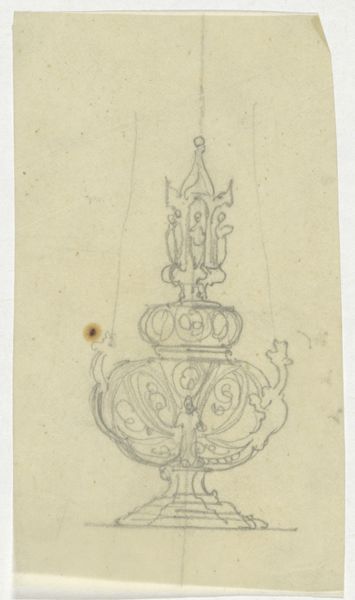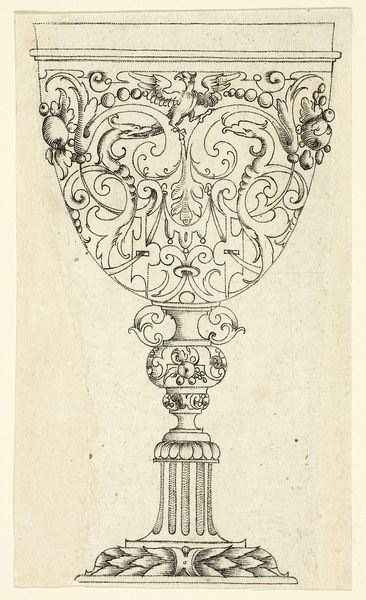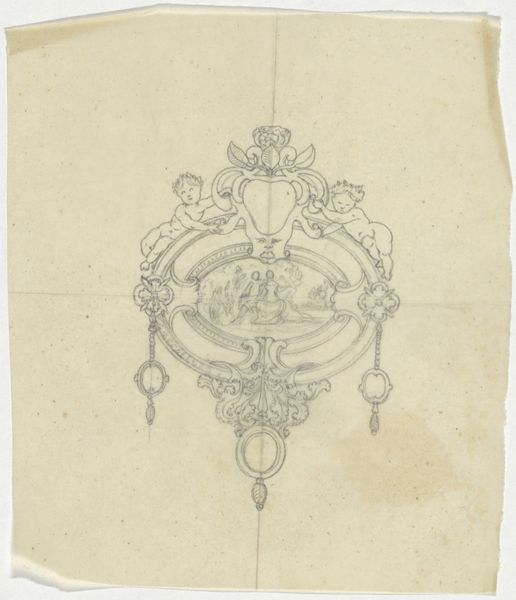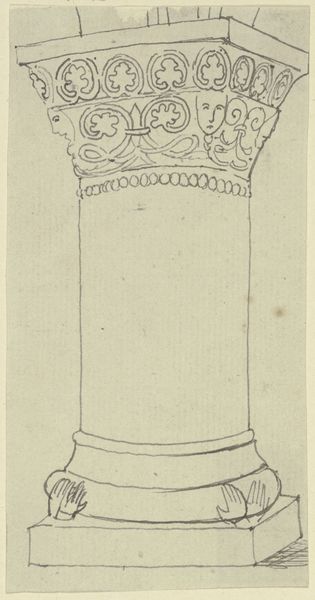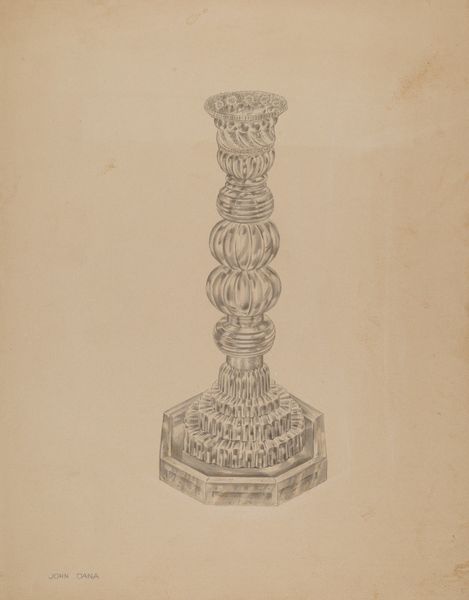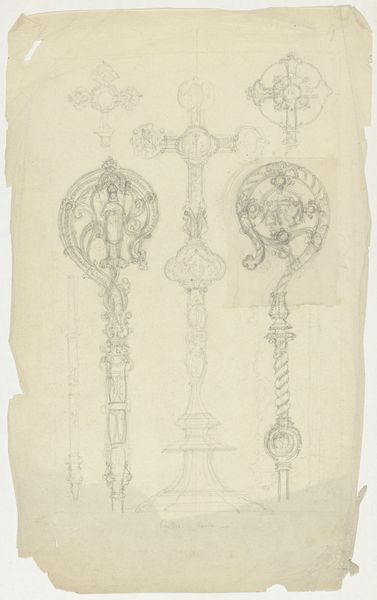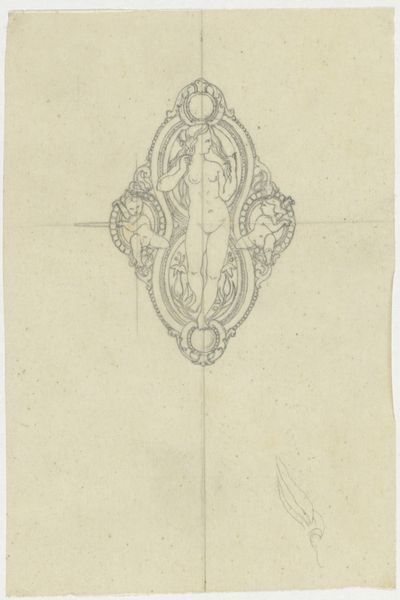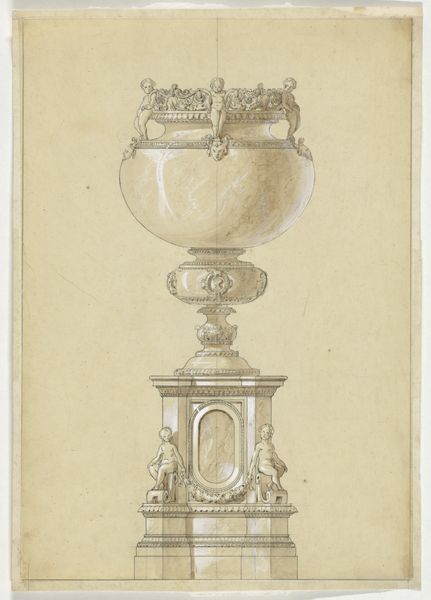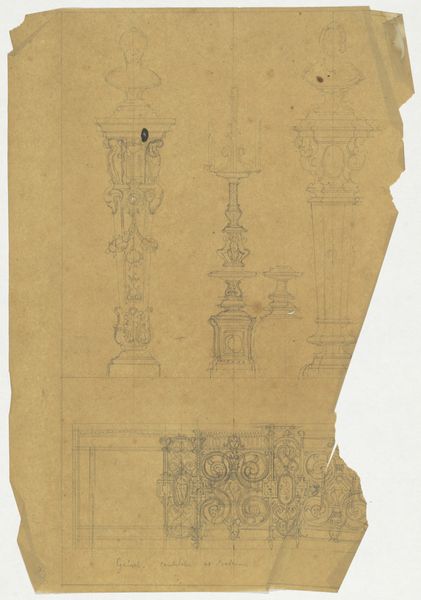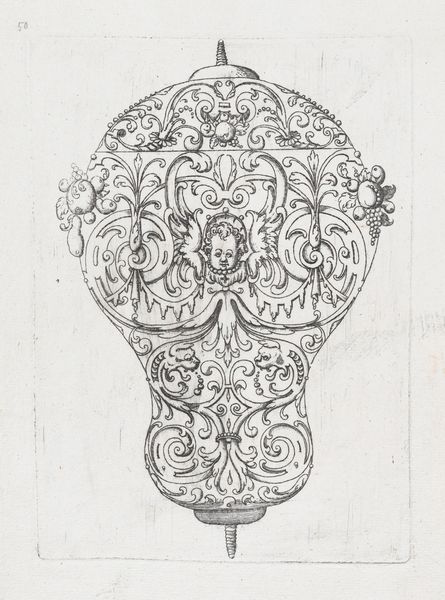
drawing, paper, pencil
#
drawing
#
amateur sketch
#
aged paper
#
toned paper
#
light pencil work
#
quirky sketch
#
pencil sketch
#
paper
#
personal sketchbook
#
pencil
#
sketchbook drawing
#
pencil work
#
academic-art
#
sketchbook art
Dimensions: height 115 mm, width 296 mm
Copyright: Rijks Museum: Open Domain
Curator: Here we have "Kelk," a pencil drawing on paper created circa 1830-1850 by Firma Feuchère. It appears to be a preliminary sketch of a chalice or goblet. Editor: There's a delicate, almost ethereal quality to it, don't you think? The light pencil work on the toned paper gives it a sense of aged beauty and refinement. Curator: Indeed. Feuchère was a French firm known for its metalwork designs. This sketch, most likely from a personal sketchbook, provides a glimpse into the design process of such ornate objects that often played important roles in religious and aristocratic contexts. The design elements – scrolling foliage, stylized figures – are so evocative of power, the church, and nobility. Editor: Look at how the artist meticulously renders the form, creating subtle gradients to convey depth. The symmetry is perfect, and it invites the eye to move up from base to lip of the goblet, while losing some detail towards the center. It is almost like two halves of different perspectives melded together. Curator: That contrast between the detailed design and the sketch-like execution is interesting. The question this object raises for me is whether objects like this promoted shared or hierarchical beliefs. While an object can serve as a uniting symbol for its viewers, its very possession implies economic or class inequality. Editor: Certainly, the object itself is a powerful visual statement of faith and authority. Note the emphasis given to proportion, balance and the subtle chiaroscuro effect in the piece. It creates a real sense of volume and light. The question, of course, is whether its purpose is decorative or illustrative. Curator: Perhaps both. These aesthetic qualities contributed to an overall symbolic narrative, lending further gravity to the act of partaking from such an item. In any case, it would be intriguing to uncover the narratives that accompanied pieces commissioned from such a workshop during the time. Editor: An excellent point! It certainly underscores the interplay of faith, art, and society. Curator: And perhaps raises some further questions for future visitors as they examine works in other rooms in the collection. Editor: Precisely! This pencil study is really fascinating and a reminder of what can be achieved by quiet contemplation.
Comments
No comments
Be the first to comment and join the conversation on the ultimate creative platform.

